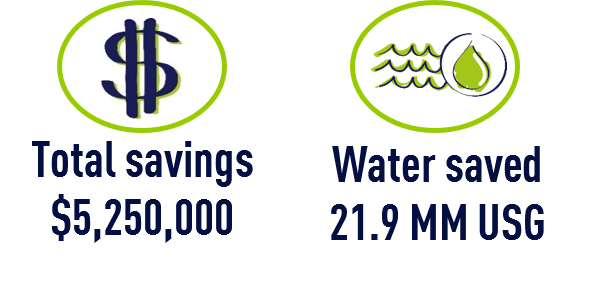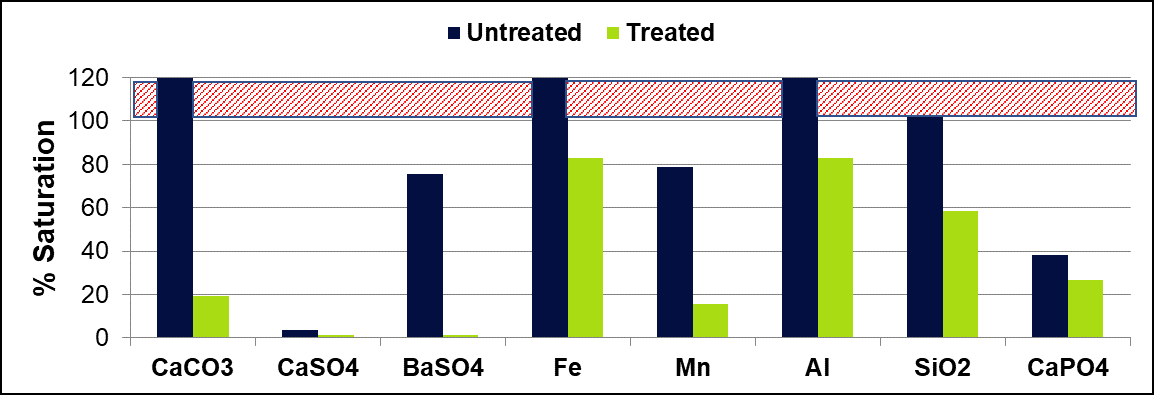
Challenge
A North American chemical processing facility has a zero-discharge waste permit to the local watershed. During normal operation, the water is sent to wells and processed through an evaporator, in which flow rates decrease throughout the run. During an unprecedented rainy winter season, the facility had an excess of water to process and threatened to overflow to the local watershed.
The wastewater produced contains high amounts of ammonia and nitrate. Discharge of water to the effluent would result in fines and put the site in violation of environmental regulations.
Solution
Reverse osmosis was used to treat the impounded wastewater. Veolia collected and analyzed feedwater samples and projected scaling using Veolia’s proprietary modelling Argo Analyzer* software. Based on the quality of the feed to the RO unit, HyperSperse* MSI was selected due to the elevated amounts of metals and salts in the feedwater.

Figure 1: Saturation Indices of treated and untreated RO feedwater
HyperSperse MSI is formulated with a proprietary Veolia polymer that is uniquely effective in preventing scaling.
Another unique challenge in processing this wastewater was the high propensity for biofouling of the membranes. A Veolia organo-bromine non-oxidizing biocide, BioMate* MBC, was used to overcome the obstacles incurred with a traditional microbiological control program. Veolia has a full suite of BioMate MBC products approved for use in non-potable RO applications.
Result
Following the implementation of the Veolia chemical treatment, RO performance was improved. By preventing membrane fouling, 21.9 MM gallons of wastewater were diverted from offsite well disposal and the evaporator, and instead were recycled from the wastewater ponds through the reverse osmosis units and repurposed to the cooling tower as makeup. Cost savings associated wastewater disposal and freshwater supply were valued at $5.25MM.
